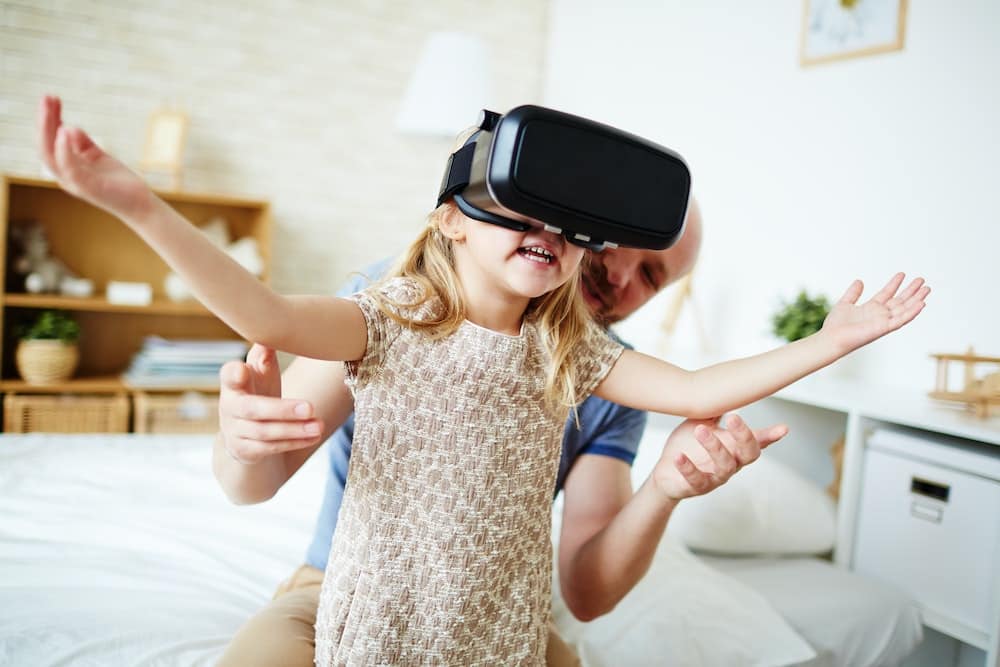How Can Virtual Reality Enhance the Learning Experience in History Education?

There is a peculiar charm in peering through the misty lens of history. The thrill of being able to understand and relate to the past is a significant component of all educational journeys. However, the traditional methodologies of teaching history often fall short when it comes to engaging students and keeping them invested in the lessons. A promising solution to this problem can be found in the realm of advanced technology, specifically Virtual Reality.
Virtual Reality (VR) is a cutting-edge technology that has been making waves in various fields for its immersive and interactive capabilities. So, how can VR contribute to the enhancement of the learning experience in history education? This article will explore the potential of VR as an educational tool, its benefits, practical implementations, and some challenges.
Have you seen this : What’s the Latest in Customizable Prosthetics for Improved Patient Comfort?
The Concept of Virtual Reality in Education
Virtual Reality, a term that was once synonymous with the world of gaming, has now permeated many other sectors, including education. This section will elucidate the concept of VR in the context of education and how it creates a unique learning experience.
Virtual Reality is a technology that leverages computer-generated simulations to create an immersive, three-dimensional environment. It allows users to interact with this environment in real-time, thus blurring the lines between the physical and digital worlds. When applied in the educational context, VR can simulate historical events, places, or cultures, transforming the learning experience from passive consumption to active participation.
This might interest you : How to Use Behavioral Economics to Encourage Energy Conservation Behaviors?
Through VR, students are no longer confined to textbook descriptions or pictorial representations. They can experience history as it unfolds around them. This can lead to a deeper understanding and appreciation of the subject matter, thus bridging the gap between knowledge and application.
Benefits of Virtual Reality in History Education
The application of Virtual Reality in history education carries numerous benefits that can revolutionize the way students learn. Let’s delve into these advantages to understand how VR can enhance learning experiences.
Virtual Reality can make history lessons more engaging and memorable. Students can literally step into the shoes of historical figures, or be transported to a different epoch, experiencing the sights, sounds, and even emotions of the past. This immersive experience can stimulate students’ interest and curiosity, thereby fostering a love for the subject.
Moreover, VR facilitates experiential learning, a pedagogical approach that emphasizes learning through experience. In the context of history, experiential learning could involve virtually participating in landmark events, exploring ancient civilizations, or even interacting with historical figures. This hands-on method of teaching can enhance understanding and retention of the topic.
Lastly, VR can democratize access to historical sites and resources. Not every school can afford field trips to museums or historical landmarks. Virtual reality can bridge this gap by providing virtual tours, granting students access to world heritage sites, art collections, and architectural wonders without leaving the classroom.
Practical Implementations of Virtual Reality in History Education
Virtual Reality, while promising, is still a relatively new tool in education. However, various practical implementations demonstrate its potential. This section explores some successful uses of VR in history education.
One example is the ‘Virtual Rome’ project, where students used VR to explore ancient Rome, interact with its architecture, and understand the socio-cultural context of the time. Another is the ‘Anne Frank House VR’ where users can virtually tour the secret annex where Anne Frank and her family hid during World War II.
These projects highlight the potential of VR not just as a tool for visualization, but also for historical analysis and critical thinking. They allow students to connect with history on a personal level, promoting empathy and understanding.
Challenges and Future Prospects of Virtual Reality in History Education
Despite its many benefits, the integration of Virtual Reality in history education does pose certain challenges. It is vital to address these issues for the technology’s successful implementation and future prospects.
One of the primary obstacles is the cost of VR equipment. High-end VR headsets and compatible devices can be quite expensive, which might limit their widespread use in schools, particularly those with limited budgets. Moreover, there are also concerns about the digital divide, where students without access to such technology risk being left behind.
Another challenge is the lack of VR content specifically designed for history education. While there are some projects, the number is still relatively small, and the development of such content requires considerable time and resources.
However, the future of VR in history education remains promising. As technology progresses and becomes more affordable, VR could become a standard tool in classrooms. Moreover, collaborations between educators, historians, and tech companies can further develop and diversify VR content for history education.
In conclusion, Virtual Reality has the potential to transform history education, making it more immersive, engaging, and accessible. While challenges exist, the future prospects of VR in education are bright and offer exciting possibilities for teaching and learning history.
The Role of Teachers and Students in Virtual Reality-Based History Education
In the context of VR-based history education, it is vital to understand the role of both teachers and students. This section will elaborate on their responsibilities and participation in the learning process enabled by VR.
For teachers, the shift to VR-based learning entails a change in their role from information provider to facilitator. Teachers need to guide students through the VR experiences, formulate relevant questions, and instigate discussions to encourage critical thinking and analysis. They also need to develop a level of competence in VR technology to be able to troubleshoot any issues that might arise during the learning sessions.
Students, on the other hand, are expected to be more proactive in their learning process. VR allows for self-directed learning, where students can explore historical sites, interact with historical figures, and virtually participate in historical events at their own pace. This active learning approach can enhance their understanding and retention of historical facts and events.
However, it’s important to ensure that VR doesn’t replace traditional teaching methods entirely but complements them. Combining VR with traditional teaching methods can result in an enriched learning experience where students get the best of both worlds.
Conclusion: The Future of Virtual Reality in History Education
Virtual Reality holds tremendous potential to revolutionize history education, making it more engaging, immersive, and relatable for students. The experiential learning facilitated by VR can lead to a deeper understanding and appreciation of history, far beyond what traditional teaching methods offer.
While the challenges associated with integrating VR into history education, such as cost and lack of VR content, are significant, they are not insurmountable. As VR technology continues to advance and become more affordable, it is likely to become more accessible to schools, even those with limited budgets. Additionally, greater collaboration between educators, historians, and technology companies can expedite the development of VR content specifically designed for history education.
In essence, the future of history education lies in the perfect blend of advanced technology like VR and traditional teaching methods. As we move forward, it is crucial for educational institutions to embrace this technology and explore its full potential to offer students a comprehensive, engaging, and immersive learning experience in history education. The journey back in time, it appears, is just a VR headset away.
